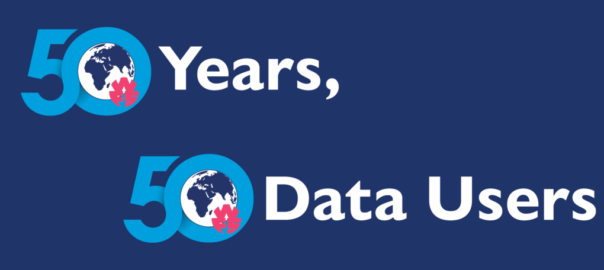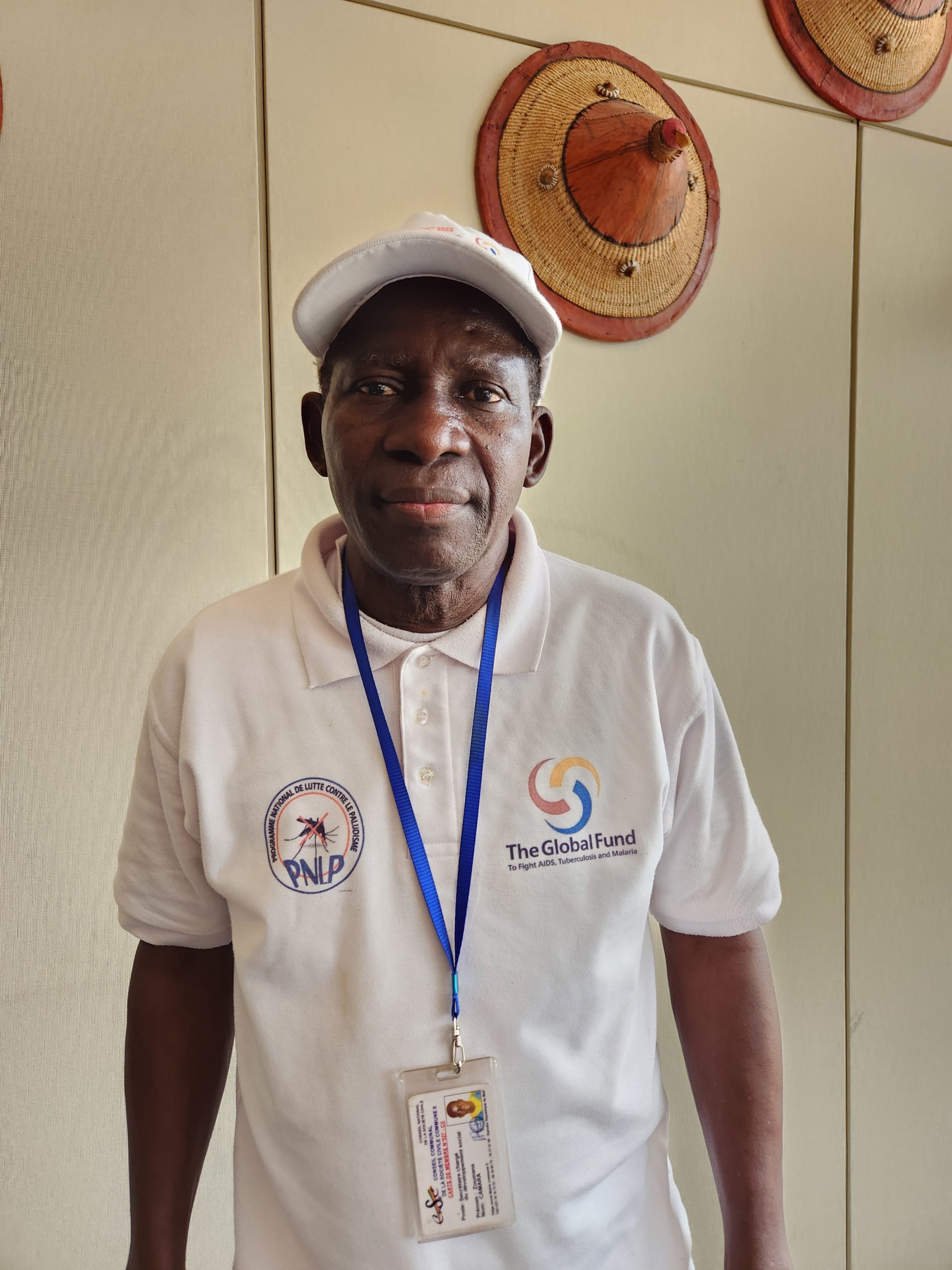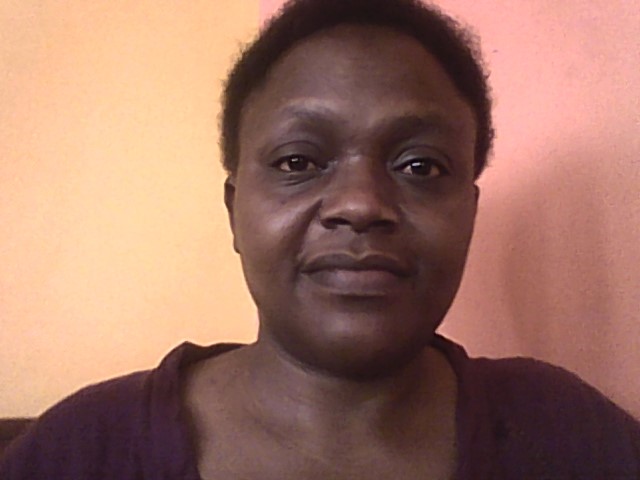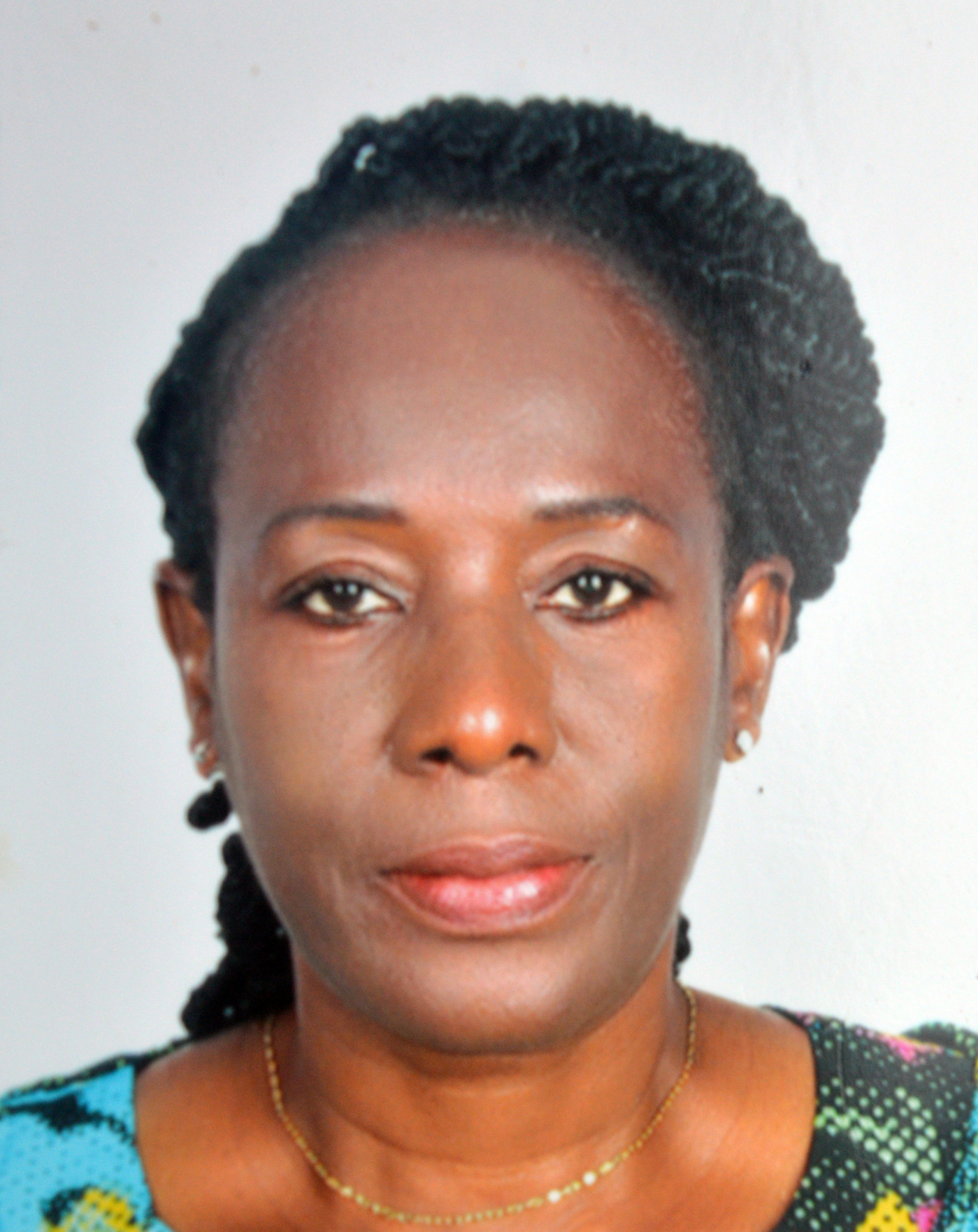50 Years, 50 Data Users: DHS Data Drive a Healthier Future for All

Throughout 2022, The DHS Program has celebrated USAID’s 50-year commitment to high-quality data collection, evidence-based decision making, and local country ownership of health and demographic information, first through the World Fertility Survey (WFS), 1972-1984, and since 1984 through The DHS Program.
WFS and DHS data are being used around the world by analysts, program managers, researchers, public health officials, policy makers, program managers and implementers, journalists and traditional communicators to reduce the malaria burden, reduce maternal mortality, train the next generation of policy makers and researchers, and ultimately, improve lives. Read about the first 10 data users, the second group of 10 data users, the third group of 10 data users, and the fourth group of 10 data users on The DHS Program blog.
Meet the final group of featured DHS data users below!

Zoumana Camara
(Mali)
“We will communicate, inform, sensitize, and mobilize [malaria data] so that people can sleep with an insecticide-treated net and children can be in good health.”
Zoumana Camara
Translated from French
Current role: RECOTRADE Vice President of Commune 2, member of national group
How I have used WFS/DHS data: RECOTRADE is a network of traditional communicators in Africa. Historically these griots, or storyteller/ musicians, have held a revered position as oral historians. Today, Zoumana Camara, who has inherited this role passed down through generations in his family, takes it as a responsibility to educate the public. “The role of RECOTRADE is to mobilize, inform, and communicate.” Mr. Camara gave an example of World Malaria Day: “For April 25th every year, the National Malaria Control Program (Programme National de Lutte contre le Paludisme du Mali), organizes an event. RECOTRADE participates every year. We (RECOTRADE) inform the population: what is malaria, how to prevent malaria, you must sleep with an insecticide treated net to prevent malaria.”
We met Mr. Camara at a Data to Action workshop for civil society members to review key findings from the 2021 Mali Malaria Indicator Survey. “PNLP have explained the 2021 Mali MIS data, it has given me a lot to reflect on. After this workshop, we will communicate, inform, sensitize, and mobilize so that people can sleep with an insecticide-treated net and children can be in good health.”

Rabina Dhakal
(Nepal)
“The more I learned about the surveys, their methodology, and data quality, the more I became fascinated with The DHS Program.”
Rabina Dhakal
Current role: MIS Specialist at CARE Nepal for USAID Adolescent Reproductive Health
How I have used WFS/DHS data: I was introduced to The DHS Program at university in 2008, when my professors referred to the 2006 Nepal DHS.
Currently, in my role at CARE Nepal, I have used the 2015 Nepal Health Facility Survey and the 2016 Nepal DHS for establishing a baseline for many indicators. In most of the work I have done now and previously, DHS Program data have been used for baseline, endline, and measuring major milestones of several programs.
The DHS Program has provided a basis for many programs and policy formulation in countries like Nepal. For instance, DHS Program reports, along with other routine health data, showed low institutional delivery rates and high neonatal and infant mortality rates in Nepal. Building on this evidence, the Ministry of Health and Population (MoHP) designed programs like “Aama Surakshya Karyakram” (Safe Motherhood Program). Likewise, a multi sectoral nutrition plan was also formulated based on the findings on nutritional indicators provided by The DHS Program.
We met Rabina Dhakal when she attended the Nepal Health Facility Data Analysis Workshop in October 2022 in Pokhara, Nepal, which was facilitated by The DHS Program. The workshop focused on examining trends from the 2015 and 2021 Nepal Health Facility Surveys.

Jovanny T. Fouogue (Cameroon)
“In the absence of The DHS Program, the entire field of global health would lack comparable country-level high quality data.”
Jovanny T. Fouogue
Current role: Faculty of Medicine of the Université de Dschang
How I have used WFS/DHS data: I used the 2018 Cameroon DHS dataset for my Master of Public Health thesis during a workshop at the Institute of Tropical Medicine in Antwerp. Throughout my career in Cameroon, I have seen DHS data used to inform programming decisions and policy making, especially for the latest Country Health Profile and the Cameroon Health Sector Strategy 2016-2027.
My favorite DHS Program indicator is skilled birth attendance, as it is the best way to assess quality improvement in maternal and child health. The best way to access DHS data is directly via the website. The process is smooth and formal permissions to use the data are easily granted.

Mohammed Meshbahur Rahman
(Bangladesh)
“As a Biostatistician, I prefer DHS data due to its high quality.”
Mohammed Meshbahur Rahman
Current role: Assistant Professor, Department of Biostatistics, National Institute of Preventive and Social Medicine
How I have used WFS/DHS data: I do research in different fields of public health, especially health demography, infectious disease, and geriatric health. I first used DHS Program data in 2017 for my Master of Science biostatistics project. I looked at data from the 2014 Bangladesh DHS about the integration of overweight-obesity and reproduction factors. Ever since, I have been using DHS data in my research. For example, my recent publication using Bangladesh DHS data from 1996-2018 found that acute respiratory infection among children under five is dropping significantly in Bangladesh. The finding is a great success in the public health sector of Bangladesh.
As a Biostatistician, I prefer DHS data due to its high quality. I have been mentoring my research team and taught them to use DHS data. Quality data can help to investigate hidden truths behind the problem. The DHS Program has been generating quality data as well as generating hidden truths in global demography and health.

Jacinta Opondo
(Kenya)
“In the absence of DHS data, we would not know where we are in terms of disease burden.”
Jacinta Opondo
Current role: Program Officer, Government
How I have used WFS/DHS data: I work for the National Malaria Program. We conducted the 2020 Kenya Malaria Indicator Survey. I have also used DHS data in Kenya to assess and redesign social and behavior change (SBC) objectives and strategies around malaria prevention and treatment.
WFS and DHS data have guided programs which have reduced morbidity and mortality. The data have been used to formulate policies and objectives, such as the Kenya Malaria SBC Strategy 2022-2027. We were able to use this data when we were developing our Malaria Social Behavior Change Strategy to come up with our communication and behavioral objectives.
I like to access DHS data through the mobile app. My favorite indicator is malaria prevalence (which can also be explored using STATcompiler).

Utibe Samuel Ebong (Nigeria)
“The DHS Program data is crucial to strengthening health systems and development interventions.”
Utibe Samuel Ebong
Current role: Knowledge Management Lead, Save the Children International
How I have used WFS/DHS data: As a public health researcher, I have used The DHS Program data to explore sexual and reproductive health issues in my region and country. In one of my journal publications, I highlighted the determinants of treatment-seeking behavior for sexually transmitted infection care services with clear implications for health policies and programs in Nigeria.
The DHS Program data is crucial to strengthening health systems and development interventions. For instance, I have seen countless interventions initiated based on the evidence presented in NDHS Survey reports. The DHS Program data has significantly impacted the health and development of the Nigerian society! I can hardly think of any country-wide health or development intervention that does not, in some way, rely on insights from The DHS Program data.
I extensively use The DHS Program’s StatCompiler for quick references. However, when I need to conduct research, I request authorization to access The DHS Program dataset(s). The modern contraceptive prevalence rate (mCPR) is by far my favorite indicator! As a public health researcher supporting development programs in sexual and reproductive health, it is my most referenced indicator.

Yingyi Lin
(United States)
“For the broad global health communities, The DHS Program bridges research, development, and multi-country policy making.”
Yingyi Lin
Current role: PhD Candidate in Population, Health, and Place at University of Southern California Spatial Sciences Institute, American Association of University Women International Doctoral Fellow
How I have used WFS/DHS data: As a global epidemiologist, I find DHS Program data most useful in mapping the population-level impact of social policies, for instance, in improving contraceptive access across space and time. But, of course, contexts matter—there is no ‘one-size-fits-all’ approach to boost regional development. That is, the way in which DHS Program data maps out the wide geographical disparities across contexts, or little progress over time within the same context, is a key asset in identifying intervention priority and informing local in-depth research interests asking why we don’t see progress and how we might satisfy the unmet needs of the population.
My own work takes a relational approach in understanding people’s health experiences by considering the salience of the presence of ‘others.’ The data linkage I have done so far includes linking mother-child pairs, linking individuals with their neighbors, and linking couples.
We met Yingyi Lin at the International Conference on Family Planning in November 2022 in Pattaya City, Thailand, where she presented research from her dissertation linking mother-child pairs using DHS data from 29 sub-Saharan African countries to analyze the spillover impact of women’s access to and use of contraception on child health. Watch her presentation.

Md Irfan Hossain (Bangladesh)
“DHS Program data have credibility and acceptability, providing strong evidence and input to development and aid workers.”
Md Irfan Hossain
Current role: Senior Program Manager, Data Analyst, Population Council
How I have used WFS/DHS data: I started using data from the 2004 Bangladesh DHS for my graduate thesis. Starting in 2021, I have analyzed datasets from more than 50 countries on indicators related to the well-being of young people age 15-19 to build our website, Adolescent Atlas for Action.
My favorite indicator is “first married by exact age: 15/18.” My colleagues and I at Population Council often have advocacy meetings with government stakeholders and policy makers, where we always reference DHS data for improving the lives of children and women. Since 2014, I have been involved in several projects to reduce child marriage in Bangladesh, and DHS data help support our advocacy with solid, reliable evidence, and it’s also important to be able to see trends over time.
We met Irfan Hossain at the International Conference on Family Planning in November 2022 in Pattaya City, Thailand, where he presented a poster on the distribution of family planning and reproductive health services in Bangladesh during the lockdown period of COVID-19. The poster was a combined presentation of two briefs (Maternal Health and Family Planning) that provide insights on how to prepare the health system to tackle similar pandemic situations in the future

Dorothy Ononokpono (Nigeria)
“In the absence of DHS data, improvement in global health may be a mirage because of the lack of reliable and representative data.”
Dorothy Ononokpono
Current role: Lecturer, University of Uyo
How I have used WFS/DHS data: From my perspective as a maternal health researcher, DHS Program data have significant impact on addressing the problem of maternal mortality, particularly in developing countries. DHS data also provide insight on the pathways to achieving the Sustainable Development Goals.
In the absence of DHS data, improvement in global health may be a mirage because of the lack of reliable and representative data. I am a registered user of DHS data and I always access data by logging into my account and making requests because it is the most convenient way of getting the data officially. As a researcher, I have used DHS Program data for about 90% of my journal articles. Data for my PhD thesis were drawn from DHS data.
My favorite indicators are maternal health indicators. My motivation for research in this area is to contribute to the alleviation of the burden of maternal mortality, particularly in the African continent.
Explore maternal mortality ratio (MMR) using The DHS Program’s new Gender Dashboard. Click ‘Health & Wellness’ and then ‘CLOSE UP on maternal mortality’. Learn more about MMR by watching this video series on YouTube and by reading this blog post.

Swadesh Gurung
(Nepal)
“When developing a provincial level health sector strategic implementation plan, DHS data were one of our main sources of information”
Swadesh Gurung
Current role: Research, Learning, and Knowledge Management Specialist, USAID’s Strengthening Systems for Better Health Activity, Abt Associates
How I have used WFS/DHS data: I have used DHS Program data in many aspects of my work, too many to count. I recently published two articles on women’s nutrition and quality of care in health facilities using data from the 2016 Nepal DHS and 2015 Nepal Health Facility Survey.
One of the notable uses of DHS Program data in my current work is to track progress of our work that focuses on strengthening maternal, child health, and family planning services in some of the most remote regions of Nepal. DHS Program data are the best source we have for evidence-based planning. When developing a provincial-level health sector strategic implementation plan, DHS data are one of our main sources of information.
There still exist discrepancies in health gains across countries and within countries that create barriers in assuring the wellbeing of all citizens. Also, health is not confined or defined by a territory; we have seen a recent example from COVID-19 that underscores the importance of global public health. By following a robust methodology to obtain population level estimates of health indicators, The DHS Program has helped decision makers reflect on these issues.
We met Swadesh Gurun at the Nepal Health Facility Data Analysis Workshop in October 2022 in Pokhara, Nepal, which was facilitated by The DHS Program. The workshop focused on examining trends from the 2015 and 2021 Nepal Health Facility Surveys.

A huge thank you to everyone who submitted nomination forms; these 50 featured DHS and WFS data users are just a small sample of all DHS data users. Thank you to everyone who uses DHS data in your work and studies!


This is wonderful and thought provoking. I thank you for providing useful data for researchers and knowledge seekers. Yours faithfully Dr. Ebere Okorie from .
Thank you for appreciating, Dr. Okorie!